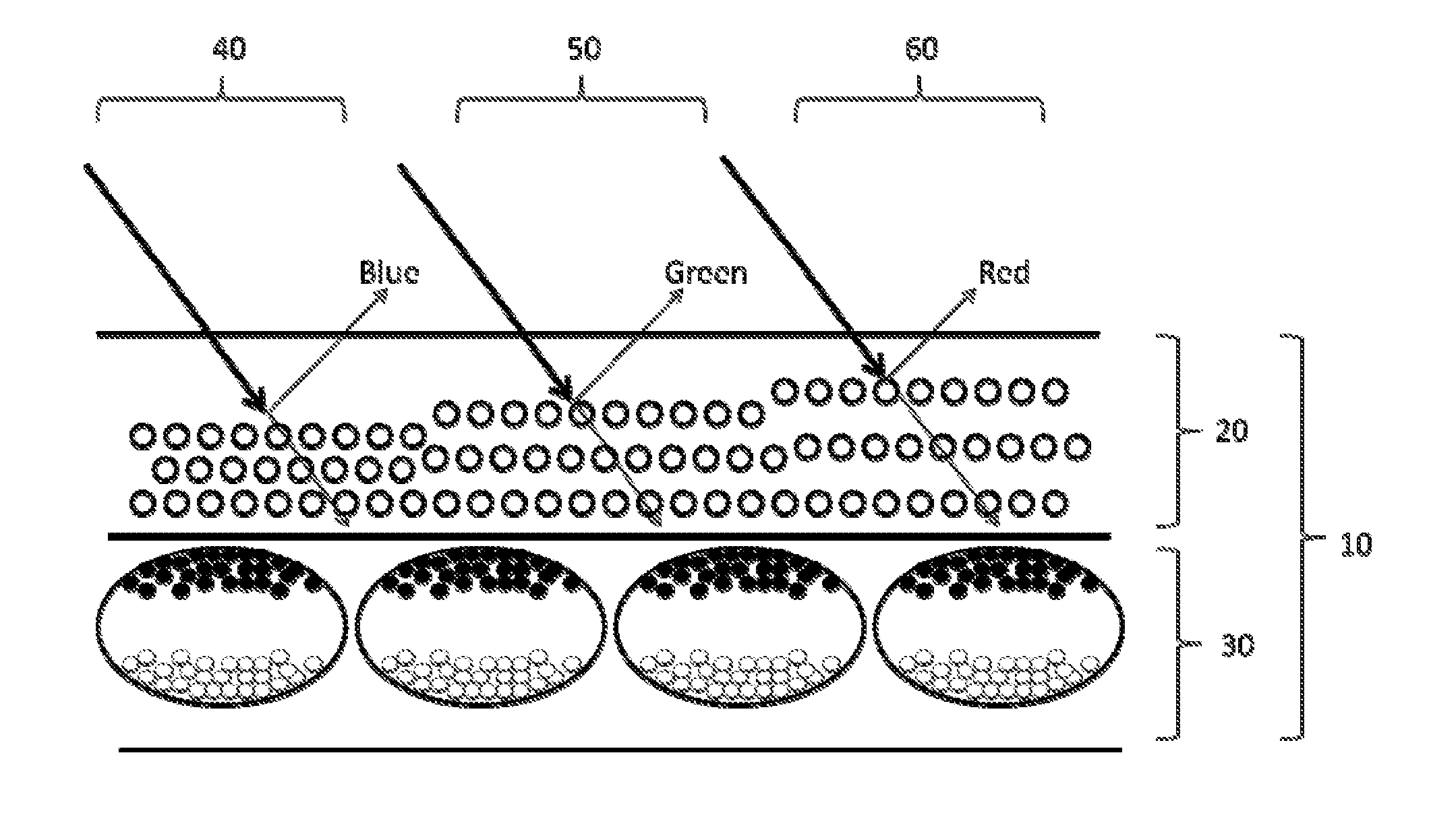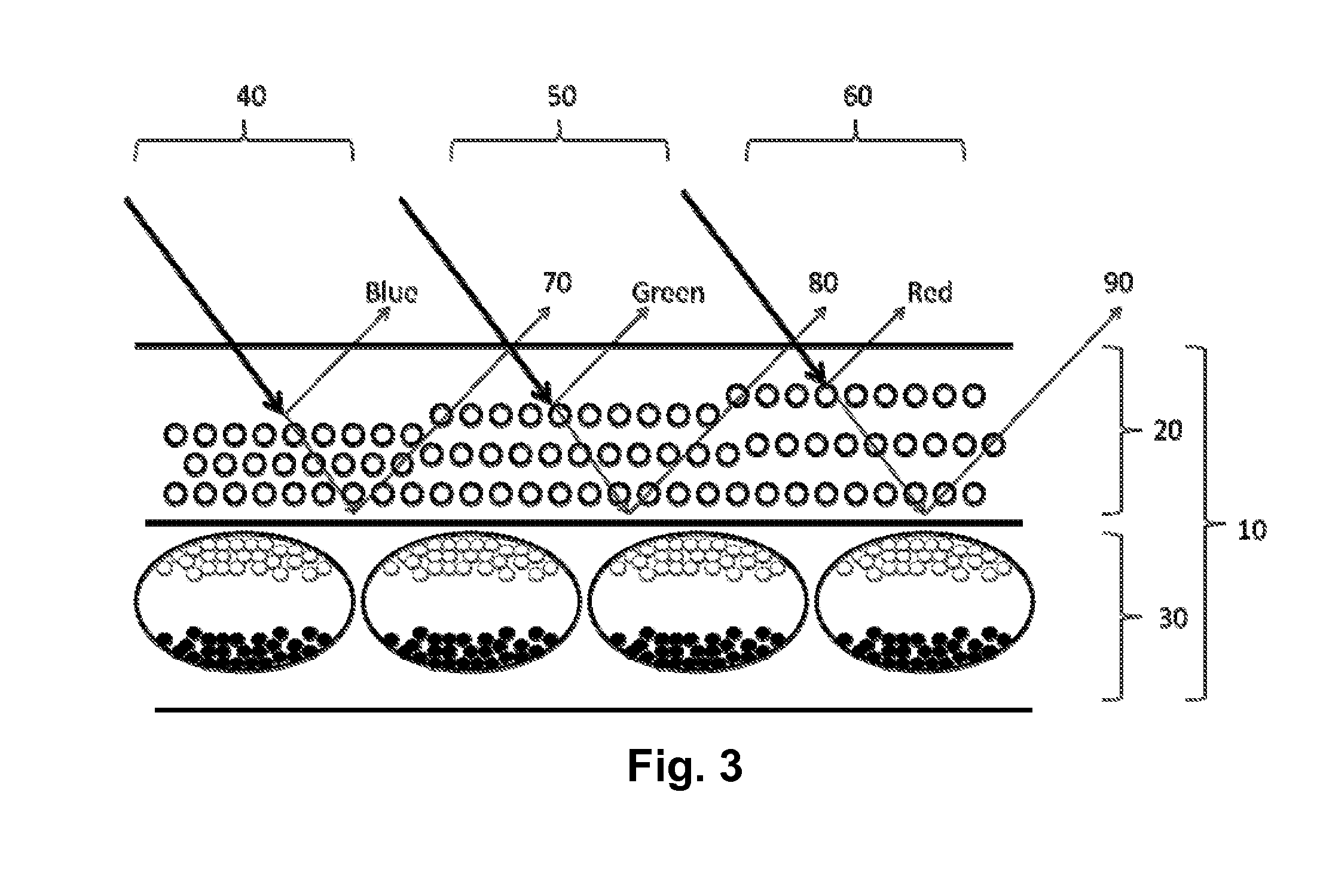Electro-optic displays
a technology of optical displays and optical elements, applied in optics, instruments, optical elements, etc., can solve the problem of not being able to produce fully saturated versions of the colors generated in reflection
- Summary
- Abstract
- Description
- Claims
- Application Information
AI Technical Summary
Benefits of technology
Problems solved by technology
Method used
Image
Examples
Embodiment Construction
[0015]As indicated above, the present invention provides a WSR display comprising a WSR medium and, disposed adjacent the WSR medium, a backing member having a first, non-reflective optical state, and a second, reflective optical state. The backing member is switchable between its first and second optical states on a pixel-by-pixel basis, the pixels of the backing member being substantially aligned with the pixels of the WSR medium.
[0016]In principle, the backing member used in the present display can be any member have non-reflective and reflective states. For example, in very large (billboard size) displays having pixels of the order of centimeters square, the backing member may be, for example, a mechanical shutter; such a shutter could have a plurality of vanes which can be rotated between a closed position in which they lie parallel to the plane of the layer of the WSR medium and present a reflective surface towards the layer of WSR medium, and an open position, in which they l...
PUM
| Property | Measurement | Unit |
|---|---|---|
| reflectivity | aaaaa | aaaaa |
| electrochromic | aaaaa | aaaaa |
| electro-wetting | aaaaa | aaaaa |
Abstract
Description
Claims
Application Information
 Login to View More
Login to View More - R&D
- Intellectual Property
- Life Sciences
- Materials
- Tech Scout
- Unparalleled Data Quality
- Higher Quality Content
- 60% Fewer Hallucinations
Browse by: Latest US Patents, China's latest patents, Technical Efficacy Thesaurus, Application Domain, Technology Topic, Popular Technical Reports.
© 2025 PatSnap. All rights reserved.Legal|Privacy policy|Modern Slavery Act Transparency Statement|Sitemap|About US| Contact US: help@patsnap.com



